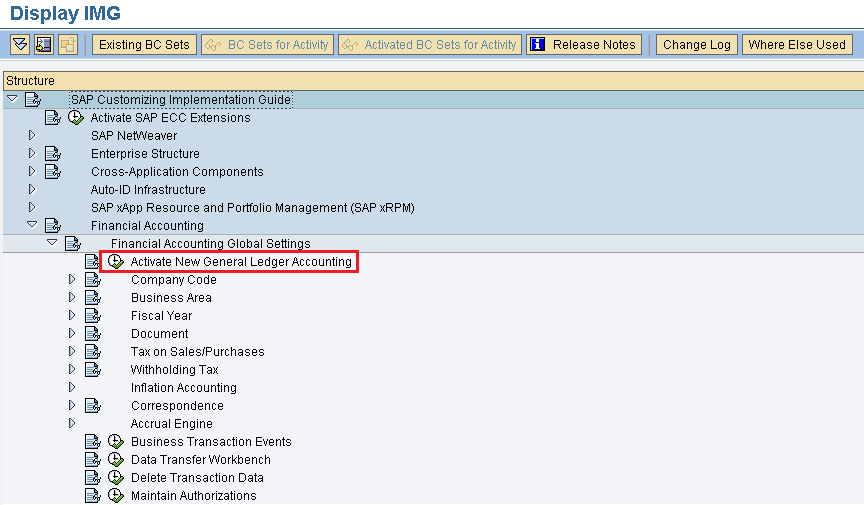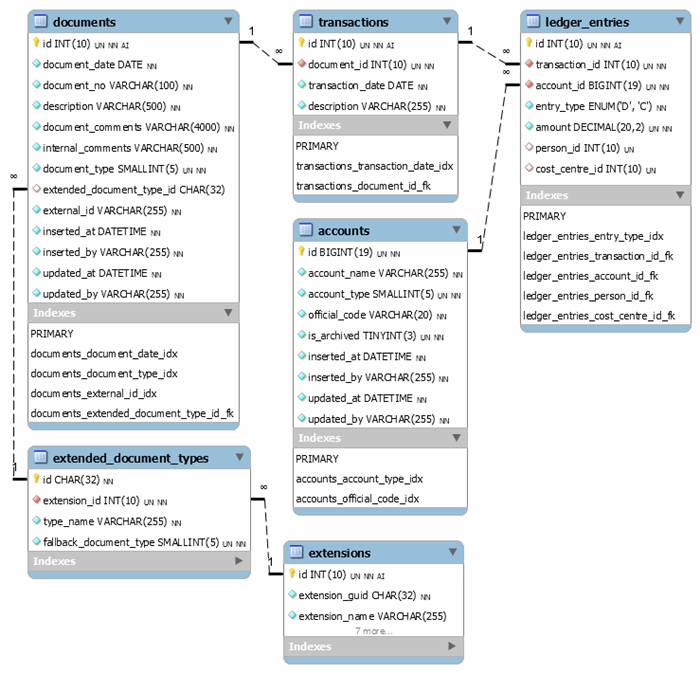
- ACCOUNTING DATABASE GL STRUCTURE TRIAL BALANCE TO
- ACCOUNTING DATABASE GL STRUCTURE SOFTWARE LIKE QUICKBOOKS
S/4: New Field 'Type of a General Ledger Account' (GLACCOUNTTYPE) for Cost Element Definition. Field XSPEB GL Account Blocked for Posting. Top Tables overview for the General Ledger Module FI-GL in SAP©View table content with transaction SE16, SE16N or SE16H (with HANA-Database) and tablestructure with SE11.
Accounting Database Gl Structure Software Like QuickBooks
Other business areas, such as Accounts Receivable & Billing and Asset Management have additional Business Units that define We illustrate the modular structure of the XBLR GL taxonomy in Figure 4.6. All General Ledger reports use one Business Unit, UMICH. The Business Unit value determines which major area of business applies to the report data. A general ledger account is a practice to keep a record of a companys total.Every General Ledger report contains these four elements, even though they may be displayed differently in each report. Fortunately, accounting has gone digital, and as a small business owner, you can automate your financial transactions with accounting software like QuickBooks.Assisting with research, filing, data entry, and recording and maintaining. Business owners kept any accounting records in large binders with reams of paper files.
In the general ledger view, the document is shown not only in the leading ledger but in the non-leading ledgers as well.Enter invoices and general ledger coding into accounting system. In contrast to the data entry view, (the view is shown when a user posts a document), the General Ledger View shows only the elements of a document that are relevant for the general ledger. The accounting cycle has four steps:General Ledger View in New GL. Business owners can generate all three statements using the accounting cycle, which includes the general ledger.
Record entries in the general ledger. In some cases, accountants post information to control accounts and then transfer the data into a journal entry. A journal entry includes an account number, a date, a dollar amount, and a description of the entry. Each accounting document is used to post a journal entry. Transactions post from source documents like receipts and invoices. Gather source documents.
Accounting Database Gl Structure Trial Balance To
Knowing the components means you can spot potential issues in your financial data. Although there are tools that automatically categorize these transactions, it’s still important to know the basic components of general ledger accounts. You can use an adjusted trial balance to generate financial reports.In financial accounting, a company’s main accounting record is its general ledger. To produce the financial statements, the accountant generates a trial balance that lists each account and the current balance. Generate financial reporting. While some small businesses use Excel, accounting software is a more efficient way to maintain general ledger accounting records.
A description: A description of the transaction. A journal entry: The number of each journal entry posted to the account and the date of the entry. A general ledger has four primary components: a journal entry, a description, debit and credit columns, and a balance.
Example of a general ledgerLet’s review the cash general ledger account for Centerfield Sporting Goods. The balance sheet uses three categories (assets, liabilities, and equity), and the income statement reports two categories (revenue and expenses). The dollar amount of total debits must equal total credits in the double-entry accounting system.General ledger accounts include five account categories. A trial balance lists every account and the current account balance. At month-end, after all the journal entries post, the ending balance is calculated.You can use the account balances in the general ledger to generate the trial balance. A balance: A general ledger lists the account balance each time a debit or credit posts to the account.
5 general ledger account categoriesGeneral ledger accounts categorize as assets, liabilities, equity, revenue, or expenses. If you checked the inventory general ledger account, you’d also find journal entry #1.A customer makes a cash payment on January 9, and the cash account increases with a $6,000 debit.On January 31, after all of the cash journal entries posts, the general ledger lists the ending cash balance. Journal entry #1 indicates that inventory is debited (increased) by $10,000, and cash is credited (reduced) by $10,000. Note the following:The January 1 beginning balance is $80,000, and the balance matches the December 2019 ending cash balance.The debit balances and credit balances post in separate columns.Purchases made on January 1 and January 5 decrease the cash account. The ledger reports each journal entry that impacted the cash account. It’s a partial listing of the general ledger for January 2020.

Additional paid-in capital. Typically, par value is $1 or $5 per share. If the company issues stock to investors, the common stock balance is the number of shares issued multiplied by the stock’s par value. The equity balance has three components: If a business sold all of its assets for cash and it to repay all liabilities, any cash remaining is equity.
The owner’s equity is the total cash and other assets that owners contribute. The retained earnings balance subtracts total company earnings since its inception from total dividends paid to shareholders.Small businesses that don’t issue stock use an account called owner’s equity, instead of common stock. A business can choose to pay earnings to shareholders as a dividend or retain earnings for use in the business. If $1 par value stock is $10 per share, $9 per share posts to additional paid-in capital.
Balance sheet accountsBalance sheet accounts are permanent accounts. These categories stay in place, regardless of the business’s accounting method. Categorizing balance sheet and income statement accountsGeneral ledger accounts post to the balance sheet or the income statement. Rent and utilities are typical business expenses. ExpensesA business incurs expenses to generate revenue. Revenue includes sales, interest income, royalties, and any other fees that the business collects.
Income statement accounts include:Expenses (salaries expense, rent expense, interest expense, etc.)The chart of accounts is a list of all of the accounts used to record transactions. These balances are closed at the end of each month, so the next month begins with a zero balance. Balance sheet accounts include:Asset accounts (cash, accounts receivable, etc.)Liabilities (accounts payable, loans payable, etc.)Income statement accounts are temporary accounts.
What are sub-ledgers?Sub-ledgers, or subsidiary ledgers, within each account provide additional information to support the journal entries in the general ledger. But they will still appear on the chart of accounts. Accounts with zero balances or no recent entries are often omitted from the general ledger.

The balance sheet formula follows:If the accounting equation is not in balance, there may be a mistake in your journal entry. The balance sheet formula adds liabilities and owner’s equity to determine a business’s assets. When a company borrows funds, the cash balance increases, and the debt (liability) balance increases by the same amount.Double-entry bookkeeping keeps the accounting equation (or balance sheet equation) in balance.
If there are accounting errors, an accountant can dig into the general ledger and fix them with an adjusting entry.Every business must strive to maintain accurate accounting records to generate reliable financial statements. Ledger information can also produce management reports for decision-making purposes.When a business owner notices a sudden rise in expenses, they can investigate the general ledger to determine the cause of the increase. What information does a general ledger tell you?The general ledger can help generate financial statements for stakeholders like investors, creditors, and regulators.
The general ledger is a summary of every business transaction at the account level.Both the general journal and the general ledger provide a way to record business transactions using double-entry accounting. The general ledger is the second point of entry for recording transactions after it enters the accounting system through the general journal. The general journal is a good place to review all accounting transactions.Generally, a transaction posts to the general journal before it makes its way to the general ledger. It is the first point of entry into the company’s accounts.


 0 kommentar(er)
0 kommentar(er)
